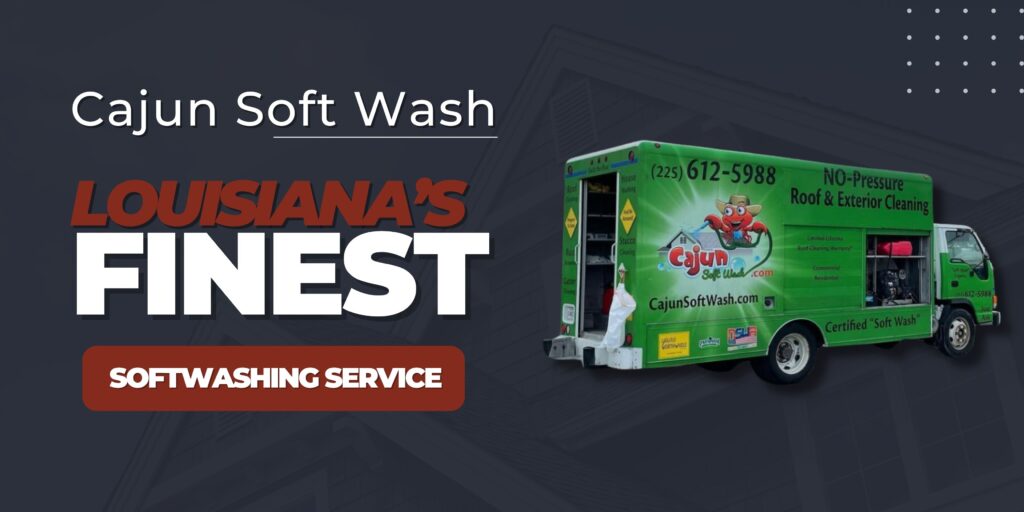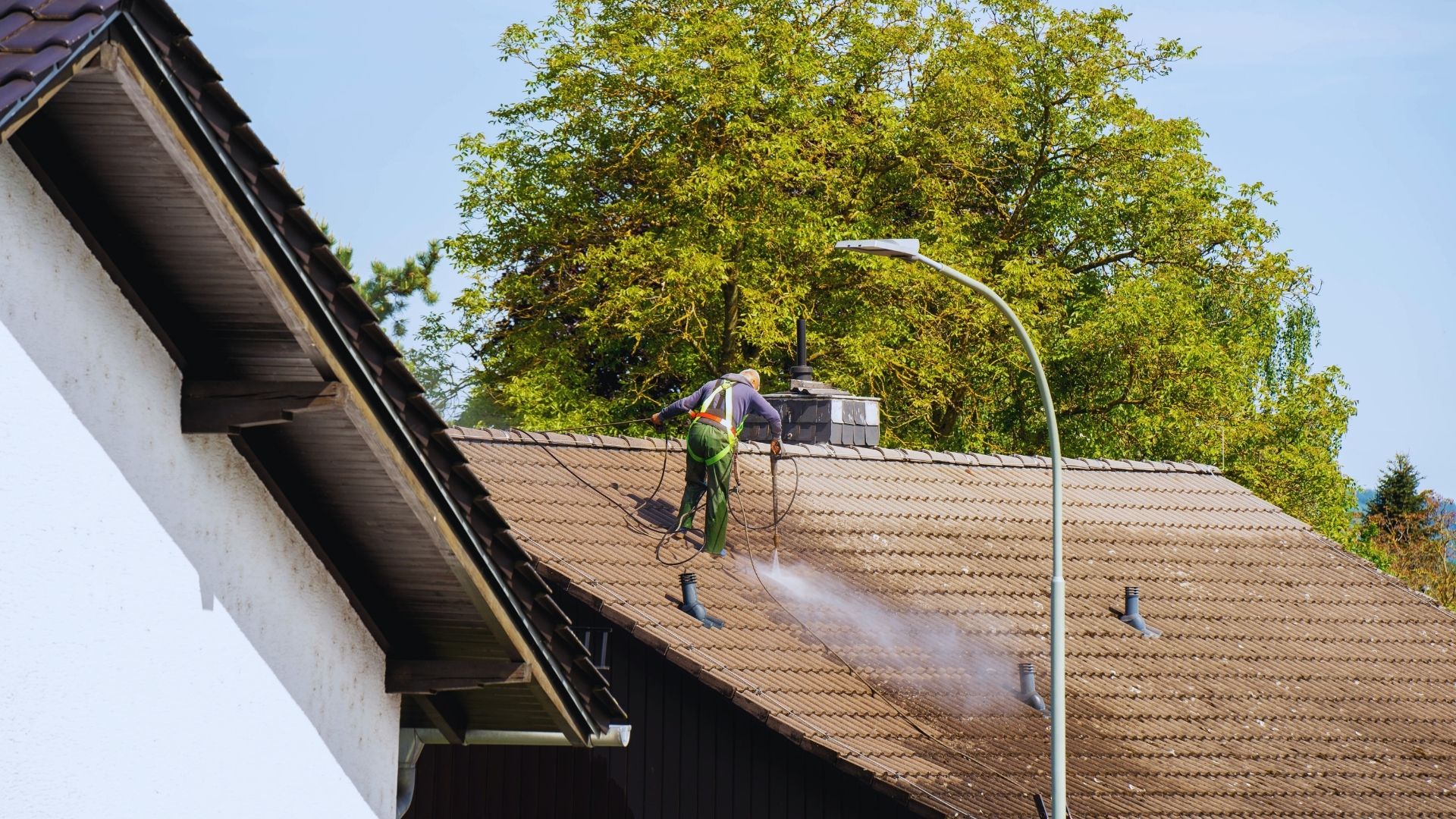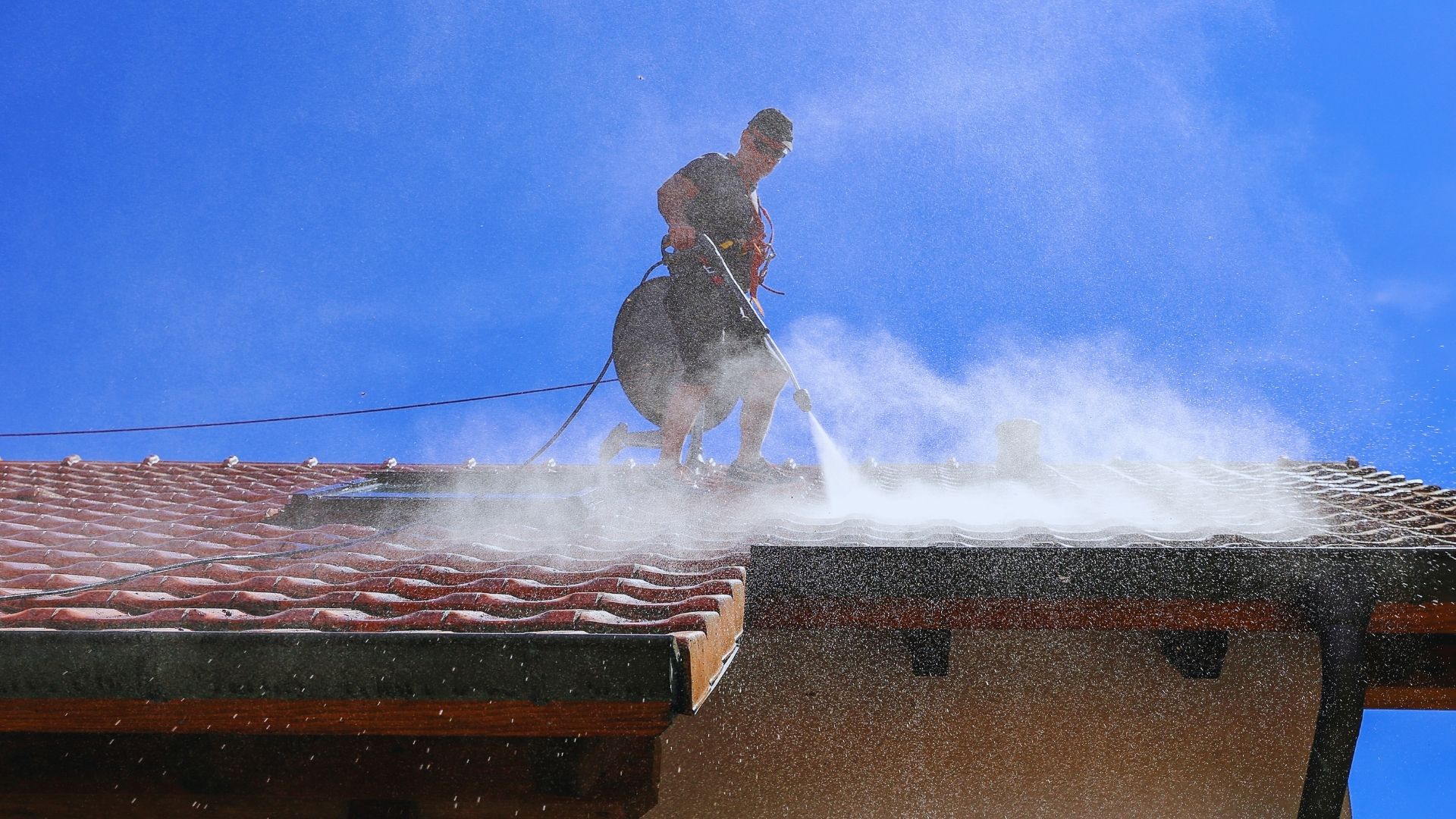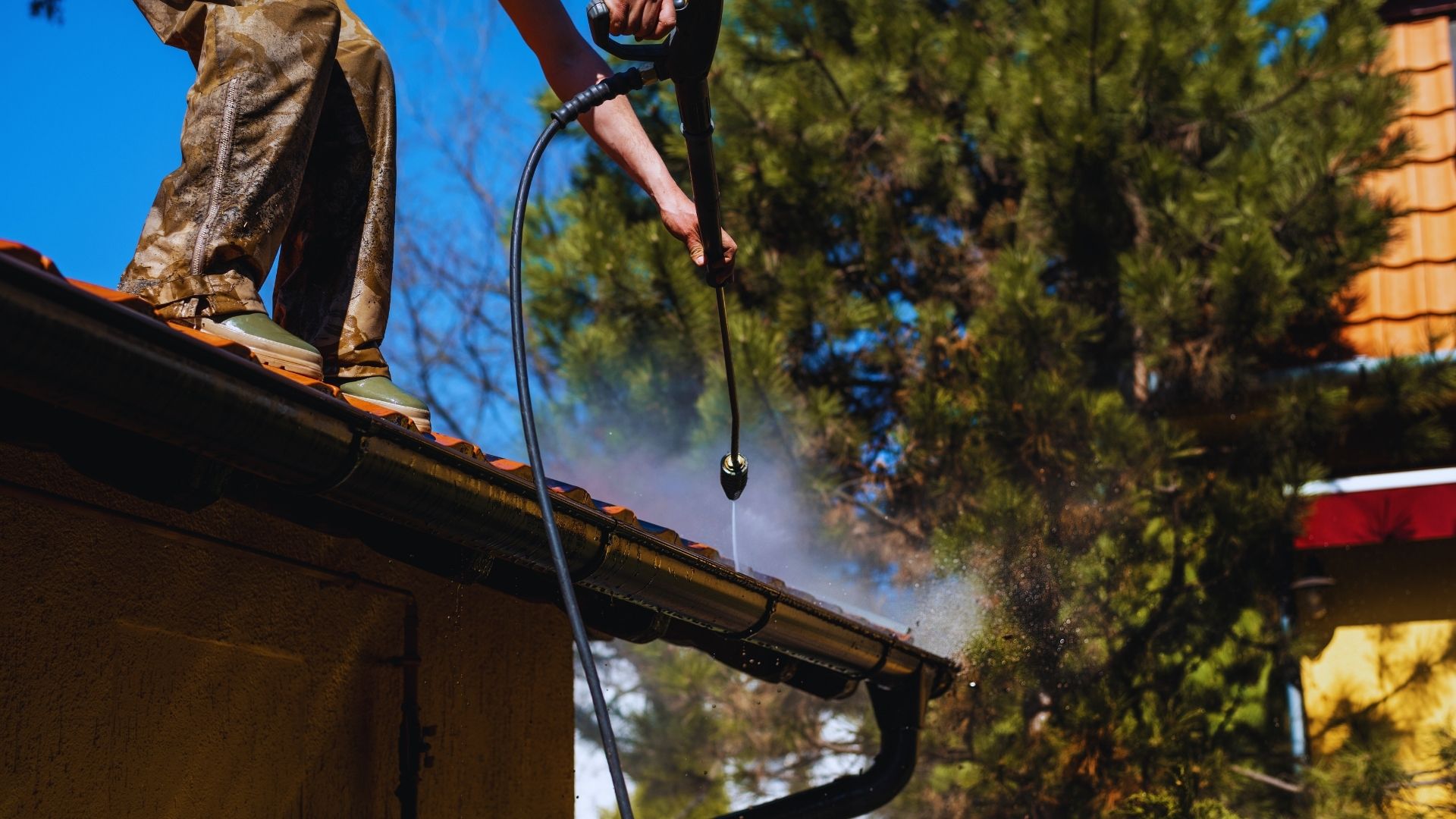Stucco walls look amazing until they get dirty. Then they become dust magnets that seem impossible to clean properly. Anyone who’s tried wiping down textured stucco knows the frustration – you think you got it clean, but then you see all the dirt still stuck in those little crevices.
The problem is that most people treat stucco like regular drywall. Big mistake. That bumpy texture catches everything – cooking grease, pet hair, dust, you name it. And if you go at it with the wrong approach, you’ll either push dirt deeper into the texture or end up with streaky, soapy residue that looks worse than when you started.
What Kind of Stucco Are You Dealing With?
Not all stucco is created equal. Some walls have that smooth, almost flat finish that’s pretty easy to clean. Others look like someone went crazy with a texture roller and created a moonscape on your wall.
Smooth stucco is your friend. Yeah, it shows every fingerprint and smudge, but at least you can actually reach the dirt to clean it off. A damp cloth handles most problems on smooth surfaces.
Then there’s the medium stuff – that orange peel texture that’s common in a lot of homes. It’s got enough bumps to be annoying but not so crazy that you need special equipment.
The really textured stuff? That’s where things get interesting. Those deep grooves and high spots create perfect hiding places for dirt. Regular cleaning methods just skim the surface while leaving all the crud in the valleys.
Tools That Actually Work
Forget fancy equipment. Most stucco cleaning happens with basic stuff you probably already have. The key is using the right tool for each step.
A vacuum with a brush attachment is worth its weight in gold. This gets all the loose stuff off before you start with water and soap. Skip this step, and you’ll just make mud out of the dust.
Soft brushes in different sizes handle the actual cleaning. Big brush for main areas, small brush for detail work. Stay away from anything stiff or wire-based – stucco finishes scratch easier than you think.
Microfiber cloths work great for wiping and drying. They grab dirt without leaving lint behind. Get several because you’ll go through them.
| What You Need | Why It Matters |
| Vacuum with brush | Gets loose dirt off first |
| Soft brushes (big and small) | Does the actual cleaning |
| Microfiber cloths | Wipes clean without streaks |
| Spray bottles | Controls how much cleaner you use |
| Drop cloths | Protects your floors |
Spray bottles let you control how much cleaning solution hits the wall. Too much water soaks into stucco and causes problems later.
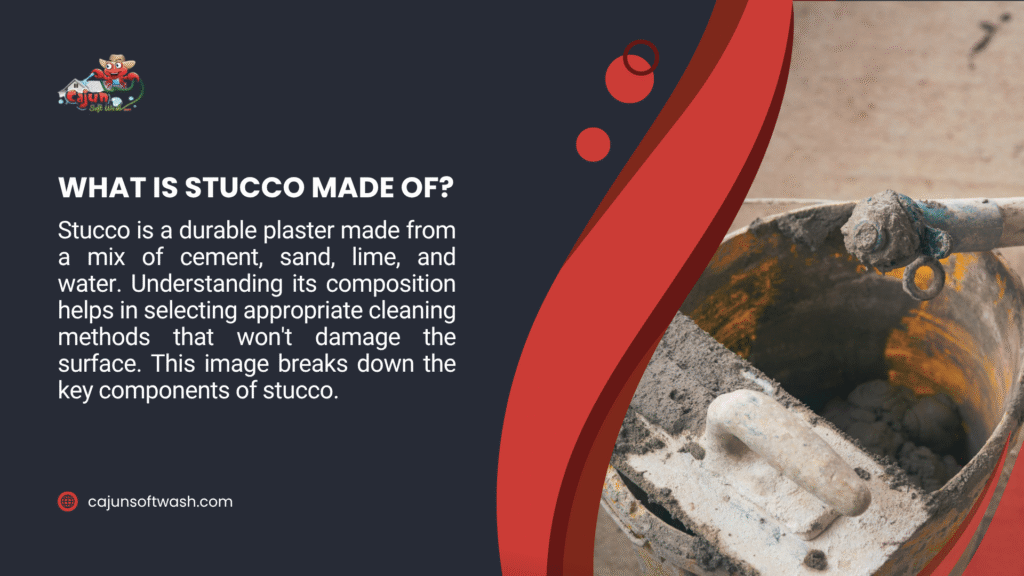
The Right Way to Clean Stucco
Start by getting everything out of the way. Move furniture, take down pictures, lay out drop cloths. This isn’t the time to work around obstacles.
Vacuum first, always. Use that brush attachment and go over every inch. You’ll be amazed how much stuff comes off. Work top to bottom so you don’t drop dirt on areas you already cleaned.
For the actual washing, mix up some warm water with a squirt of regular dish soap. Nothing fancy, just basic soap that cuts grease. Spray a small section of wall, scrub gently with your brush, then wipe clean with a damp cloth. Follow up with a dry cloth right away.
Work in small areas. Don’t spray half the wall and then try to clean it all before it dries. That’s a recipe for streaks and soap residue.
The scrubbing part takes patience. Let the soap do the work instead of trying to muscle through tough spots. If something won’t come off easily, spray it again and give the soap more time to work.
Dealing with Problem Spots
Kitchen walls get greasy. Regular soap sometimes isn’t enough for that cooking buildup. White vinegar mixed with water cuts through grease better than soap alone. This is similar to what works for cleaning stucco with vinegar on exterior walls, just gentler for indoor use.
Kids’ rooms have their own special challenges. Crayon marks come off with a barely damp sponge, but test it somewhere hidden first. Some stucco finishes are more delicate than others.
Bathroom stucco sometimes gets water spots or soap scum. The vinegar solution works here too. Just don’t soak the wall – stucco absorbs water and you don’t want moisture problems later.
Grease stains need quick attention. Blot up what you can, then clean with degreasing dish soap. The longer grease sits, the harder it gets to remove
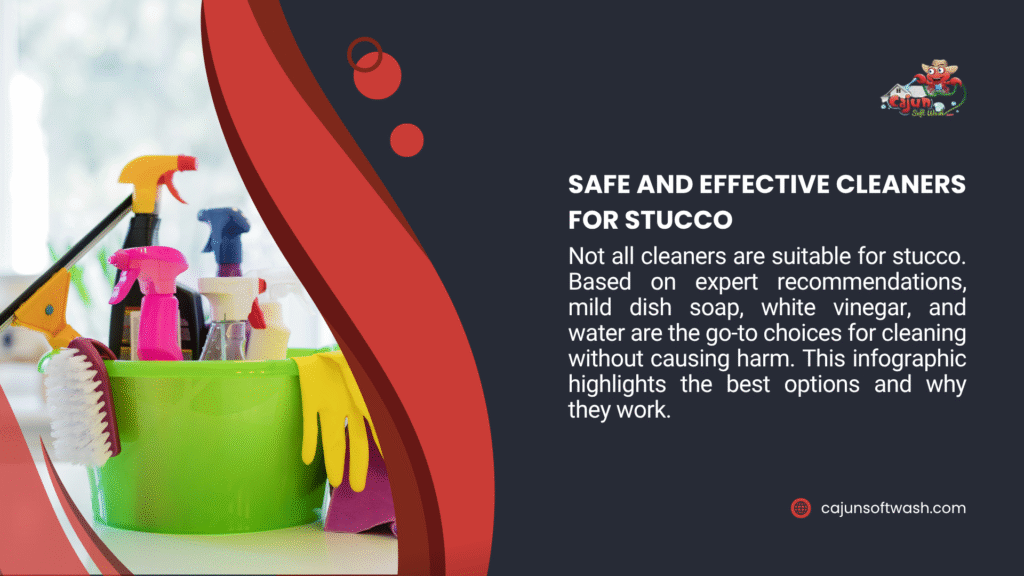
Keeping Stucco Clean
Regular dusting prevents major cleaning sessions. A microfiber cloth or vacuum brush attachment once a week keeps dust from building up in the texture. High-traffic areas might need it more often.
Deal with spills and marks right away when possible. Fresh stains always come off easier than old ones that have had time to set in.
Keep humidity under control, especially in bathrooms and kitchens. Good ventilation prevents moisture problems that make cleaning harder and can damage stucco over time.
What Not to Do
Don’t soak stucco walls. That textured surface soaks up water like a sponge, and too much moisture causes discoloration or worse problems. Use just enough water to get the job done.
Avoid harsh chemicals or abrasive cleaners. They can discolor stucco or damage the finish. Stick with mild soap and water for most cleaning.
Don’t rush the drying. Let each section air dry completely before moving on. Trapped moisture in the stucco texture causes problems later.
Power washing is definitely out for interior walls. Even if you’re wondering if you can pressure wash stucco for outdoor applications, indoor stucco needs much gentler treatment.
Making Cleaning Easier
Kitchen exhaust fans and range hoods keep grease from settling on walls in the first place. Better ventilation means less frequent deep cleaning.
Some people put washable paint over stucco in areas that get dirty often. It changes the look somewhat but makes maintenance much easier.
Check walls regularly for any cracks or damage. Small problems are easier to fix than big ones, and damaged stucco is harder to clean properly.
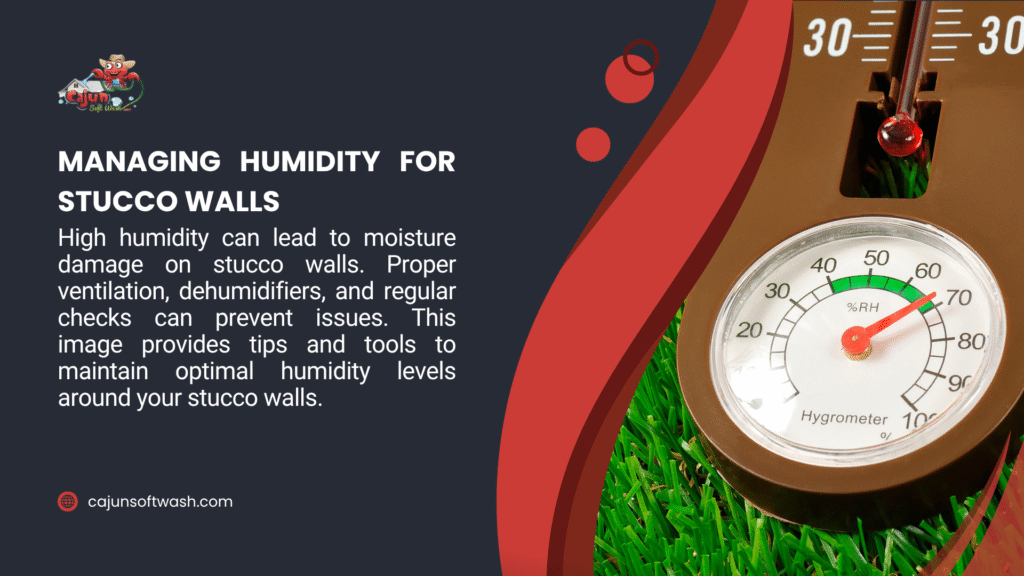
When the Job Gets Too Big
Cleaning interior stucco walls yourself works fine for regular maintenance, but some situations call for professional help. Stubborn stains, large areas, or delicate finishes benefit from expert attention.
Professional cleaners have specialized equipment and experience that delivers better results while protecting your walls. They know how to handle different stucco types and can tackle problems that might be too challenging for DIY methods.Cajun Soft Wash understands how to clean interior stucco walls properly without causing damage. Professional cleaning restores walls to like-new condition and saves the time and frustration of doing it yourself.


